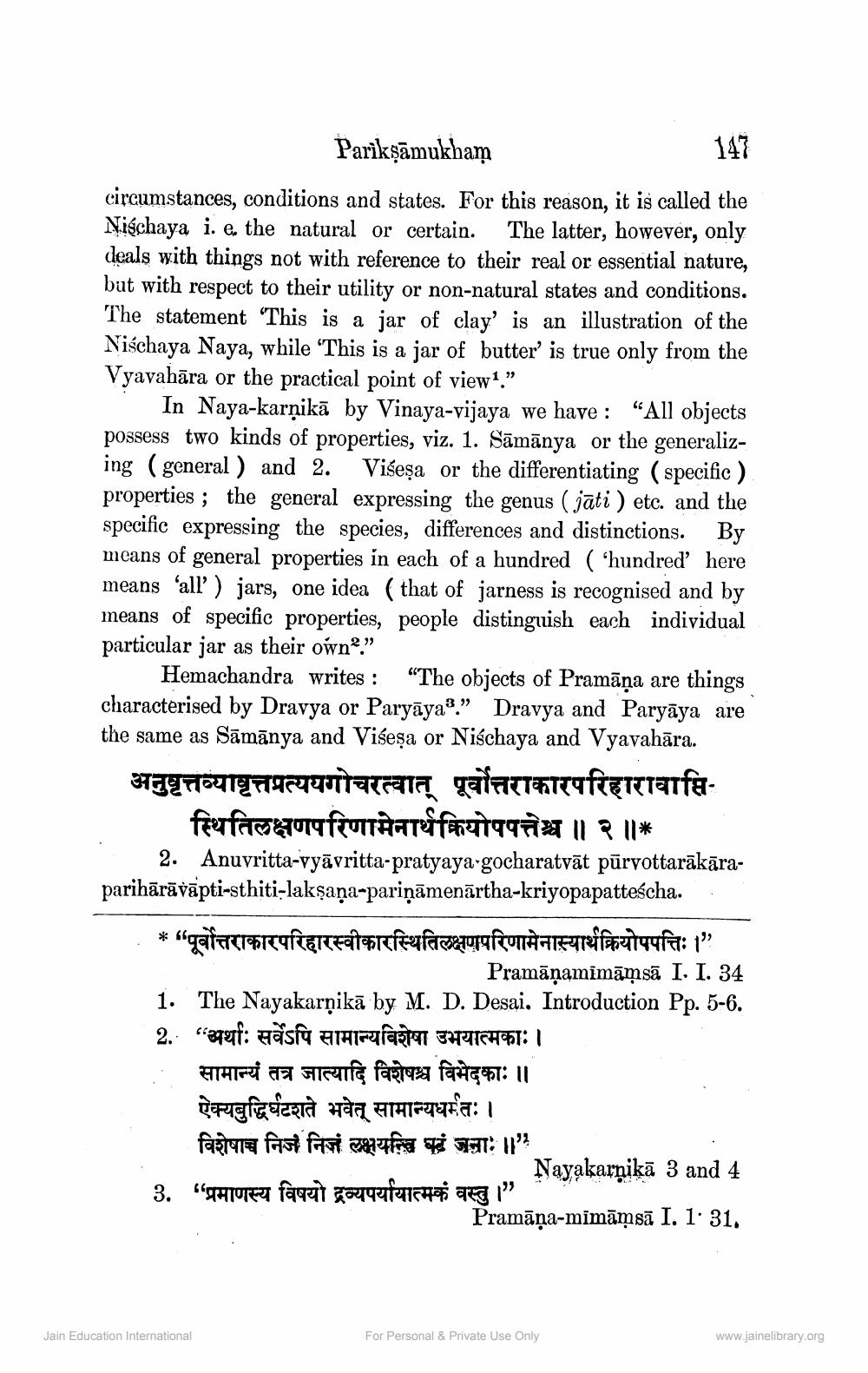________________
Parikṣāmukham
147
circumstances, conditions and states. For this reason, it is called the Nischaya i. e. the natural or certain. The latter, however, only deals with things not with reference to their real or essential nature, but with respect to their utility or non-natural states and conditions. The statement "This is a jar of clay' is an illustration of the Nischaya Naya, while 'This is a jar of butter' is true only from the Vyavahara or the practical point of view1."
In Naya-karṇikā by Vinaya-vijaya we have: "All objects possess two kinds of properties, viz. 1. Sāmānya or the generalizing (general) and 2. Višesa or the differentiating (specific) properties; the general expressing the genus (jāti) etc. and the specific expressing the species, differences and distinctions. By means of general properties in each of a hundred ('hundred' here means 'all') jars, one idea (that of jarness is recognised and by means of specific properties, people distinguish each individual particular jar as their own?"
Hemachandra writes: "The objects of Pramāņa are things characterised by Dravya or Paryaya." Dravya and Paryaya are the same as Samanya and Viseṣa or Nischaya and Vyavahāra. अनुष्टत्तव्यावृत्तप्रत्ययगोचरत्वात् पूर्वोत्तराकारपरिहारावाप्तिस्थितिलक्षणपरिणामेनार्थक्रियोपपत्तेश्च ॥ २॥*
2. Anuvritta-vyavritta-pratyaya-gocharatvāt pūrvottarākāraparihārāvapti-sthiti-lakṣaṇa-pariņāmenārtha-kriyopapatteścha.
“पूर्वोत्तराकारपरिहार स्वीकारस्थितिलक्षणपरिणामेनास्यार्थक्रियोपपत्तिः ।” Pramāṇamimāmsā I. I. 34 1. The Nayakarṇikā by M. D. Desai. Introduction Pp. 5-6. 2. “ अर्थाः सर्वेऽपि सामान्यविशेषा उभयात्मकाः ।
सामान्यं तत्र जात्यादि विशेषश्च विभेदकाः ।। ऐक्यबुद्धिर्घटशते भवेत् सामान्यधर्मतः । विशेषाच्च निजं निजं लक्षयन्त्रि घटं जनाः ।। "
3. " प्रमाणस्य विषयो द्रव्यपर्यायात्मकं वस्तु ।”
*
Jain Education International
Nayakarnika 3 and 4
Pramāṇa-mimāmsā I. 1 31.
For Personal & Private Use Only
www.jainelibrary.org




